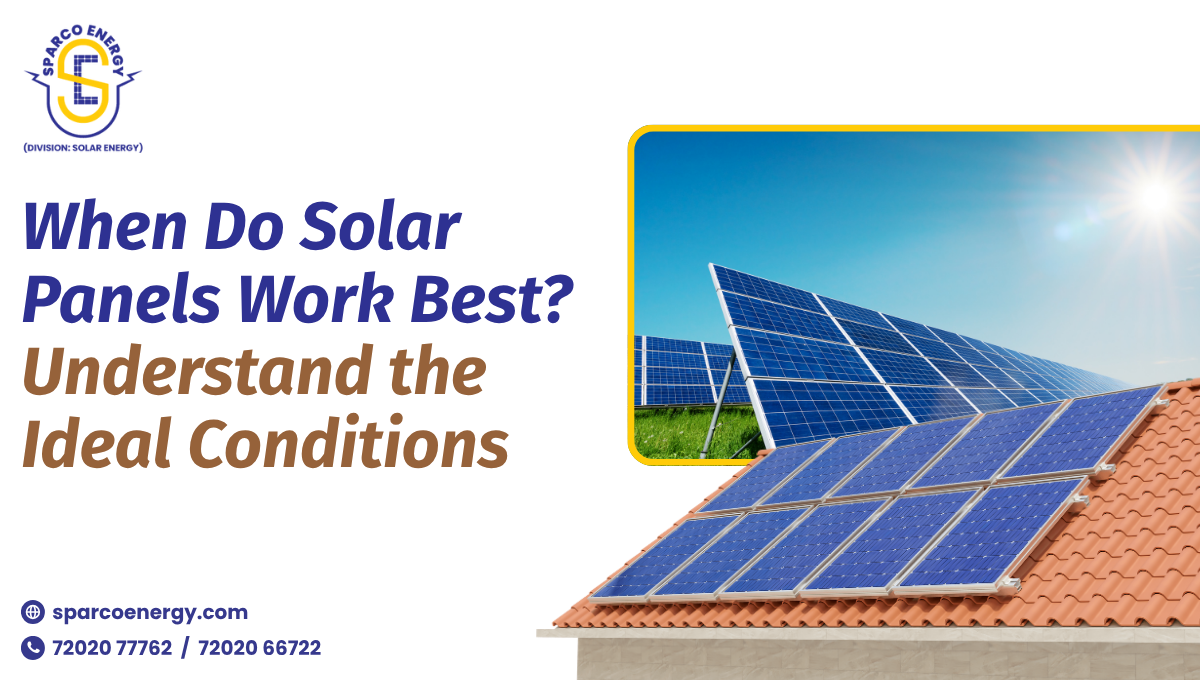When Do Solar Panels Work Best? Understand the Ideal Conditions
When Do Solar Panels Work Best? Understand the Ideal Conditions

Advanced Solar Power Systems has proven to be the most beneficial option for households and corporations alike. Yet few know the precise circumstances under which solar panels will provide their best performance. Truth is the fact that production depends upon the intensity of the sunshine, the temperature, the weather conditions, as well as the method of installation.
Knowing the workings of the factors on each other makes it possible for anyone to obtain the highest value using Advanced Solar Power Systems, as well as long-term savings.
Advanced Solar Power Systems
Peak Performance Hours: Maximising Daily Output
Those panels provide the greatest energy production between 11:00 AM and 2:00 PM, where the brief time frame contributes almost 35% of daily production. Good performance also persists between 10:00 AM and 4:00 PM, providing a steady supply of energy throughout the middle of the day.
During solar noon, when the sun sits directly overhead the panel, the radiation shines through thinner atmospheric layers, providing more efficient energy conversion.
Temperature’s Decisive Role in Efficiency’s Efficiencies
Solar panels work best at around 25°C (77°F). Debatable as it may seem, temperatures higher actually decrease the efficiency. For each degree Celsius over this value, the efficiency drops by 0.3–0.5%. On extremely hot days, panel surface temperatures may increase by as much as 65°C, potentially decreasing the output by as much as 15%.
The plus point for today’s Advanced Solar Power Systems lies in their application of the latest cell designs, which cope with the heat more efficiently by losing less heat. Low temperatures but clear skies will also boost the rating.
Ideal Weather Conditions for Power Generation
Clear skies provide the strongest solar gains, but panels still generate power under cloudy skies at about 10–25% capacity. Wind also plays a positive role, as even a light breeze cools panels by several degrees, improving performance.
Rain naturally cleans panel surfaces, preventing dust from blocking sunlight. In some locations, reflections from water or desert sunlight help further boost generation, despite the challenges of heat.
Installation Factors: Angle and Orientation Are Important
Correct installation ensures peak performance. In the Northern Hemisphere, panels must face true south, but in the Southern Hemisphere, the panels must face true north. Optimal tilt angle also corresponds to the site’s latitude and ranges from 15 to 40°C. Systems installed loosely for airflow tend to run 5–10°C cooler and run more efficiently than tightly secured roof installations.
Trust Experts for Maximum Results
The efficiency of solar panels depends on time, weather, temperature, and installation. Cleanliness and monitoring on a regular basis also maintain efficiency. For the people who want to utilise their money to the best use, it’s all about using the best professionals.
Sparco Energy, established for more than 15 years in the industry and having completed 15+ MW solar projects, provides turn-key EPC for residential and commercial customers.
Call Sparco Energy now to optimise your solar return.